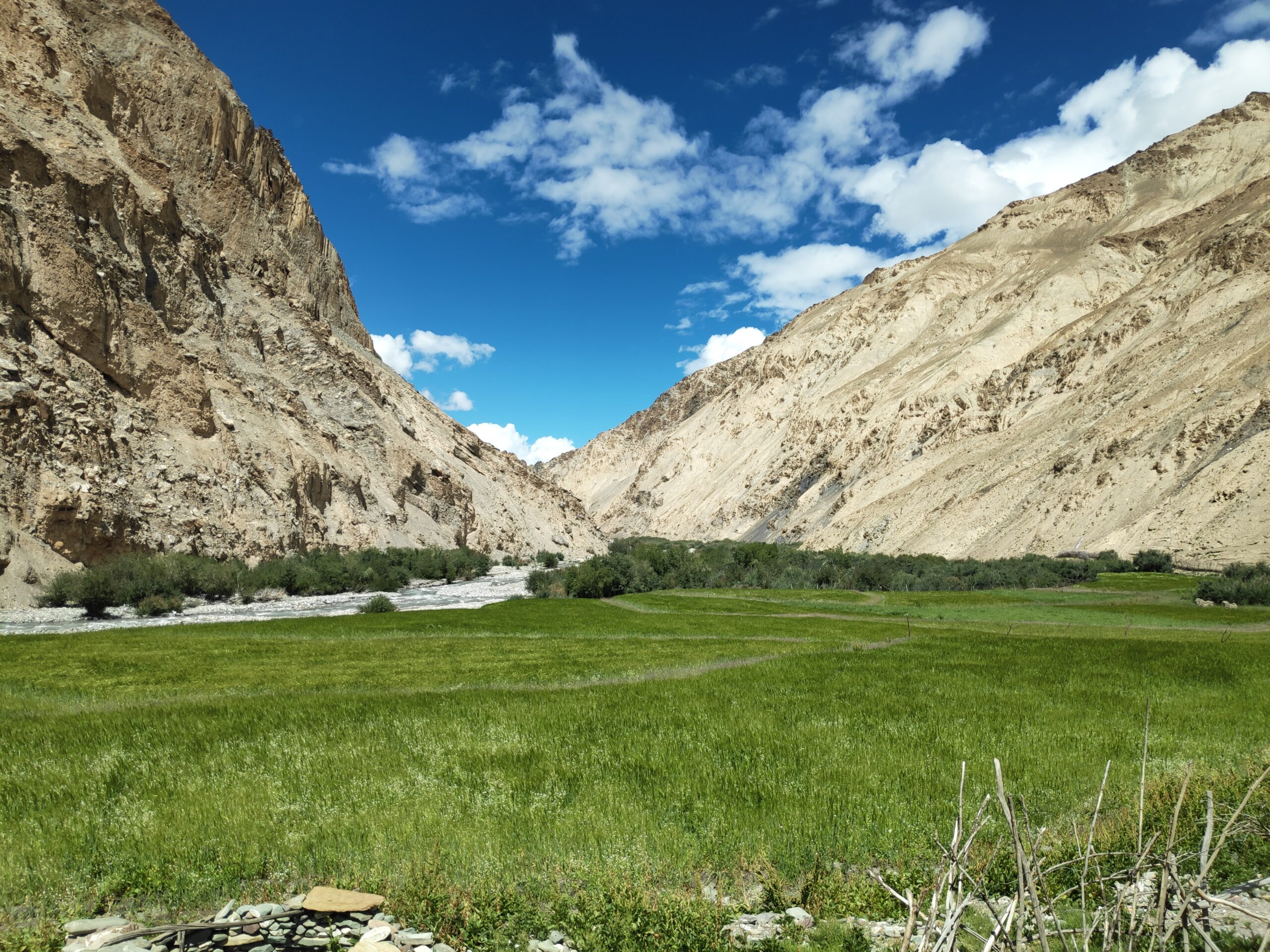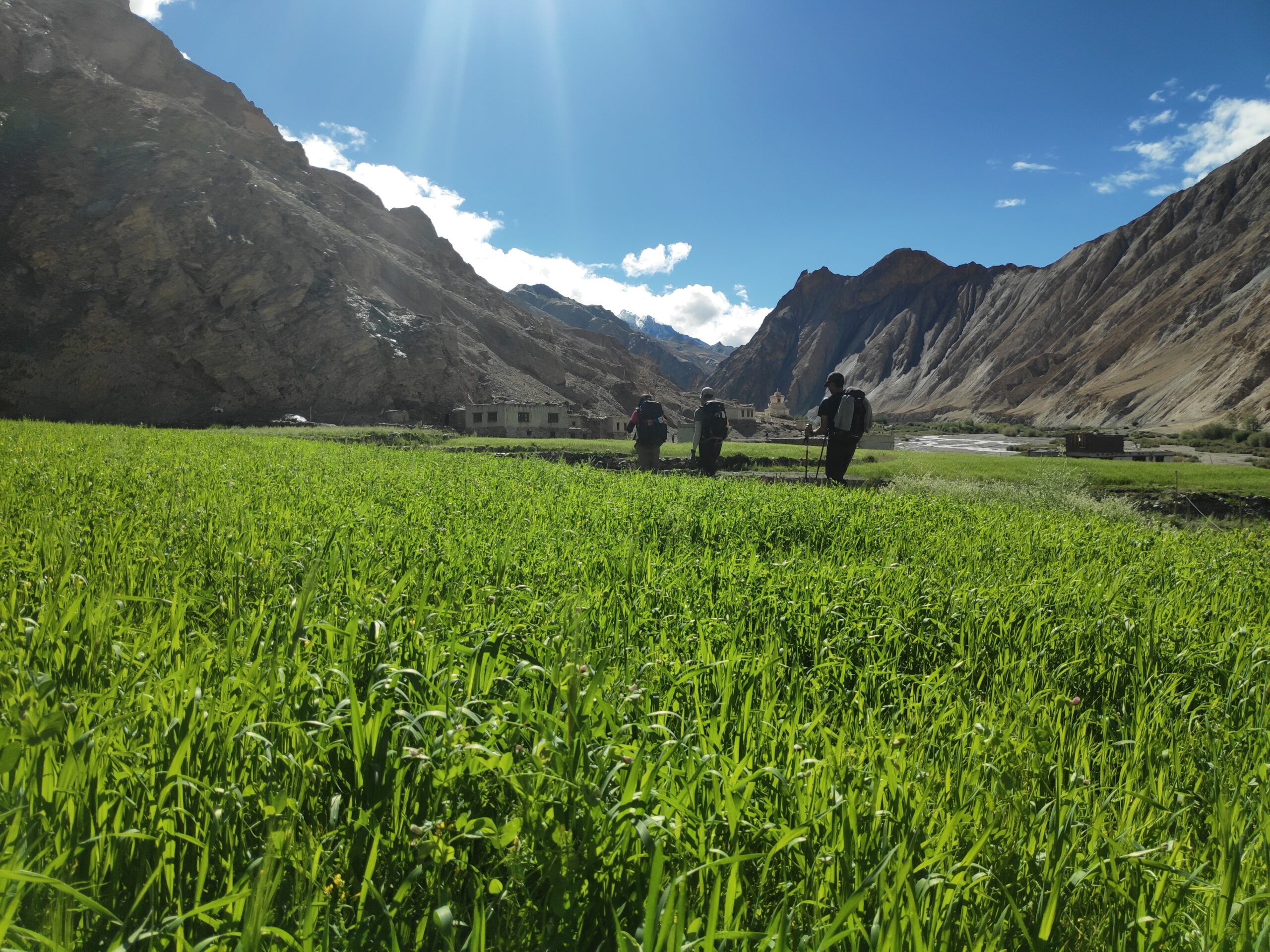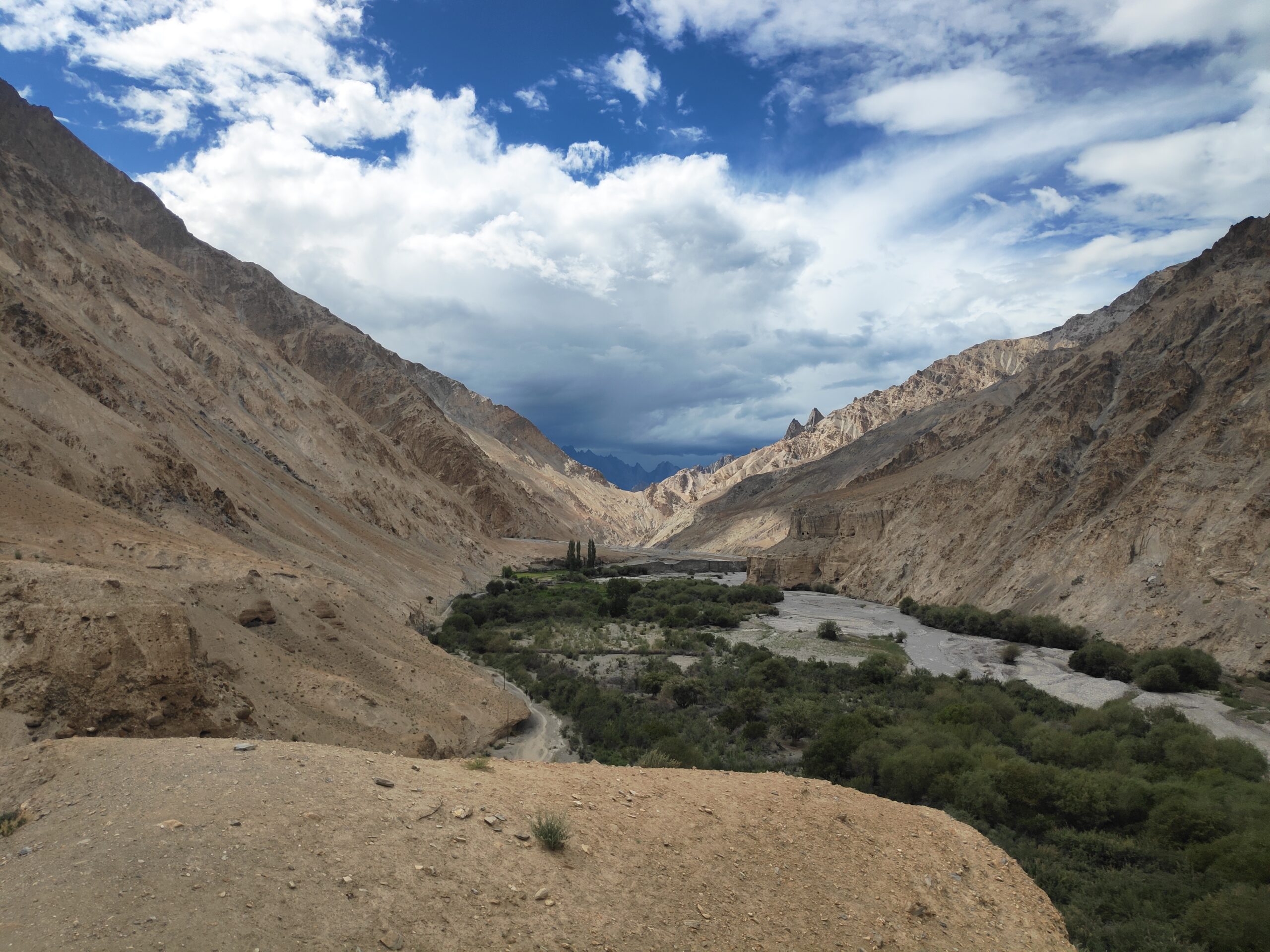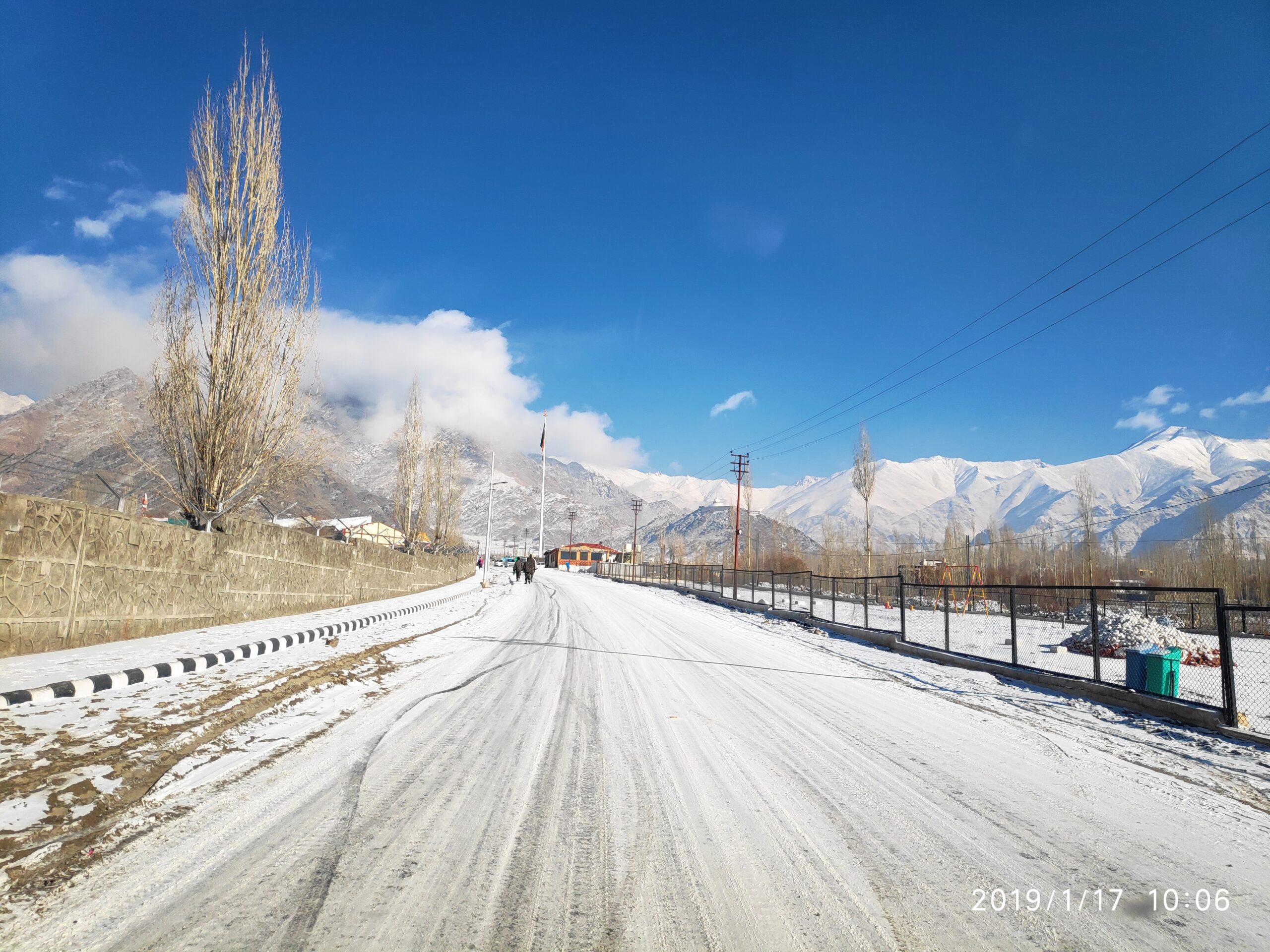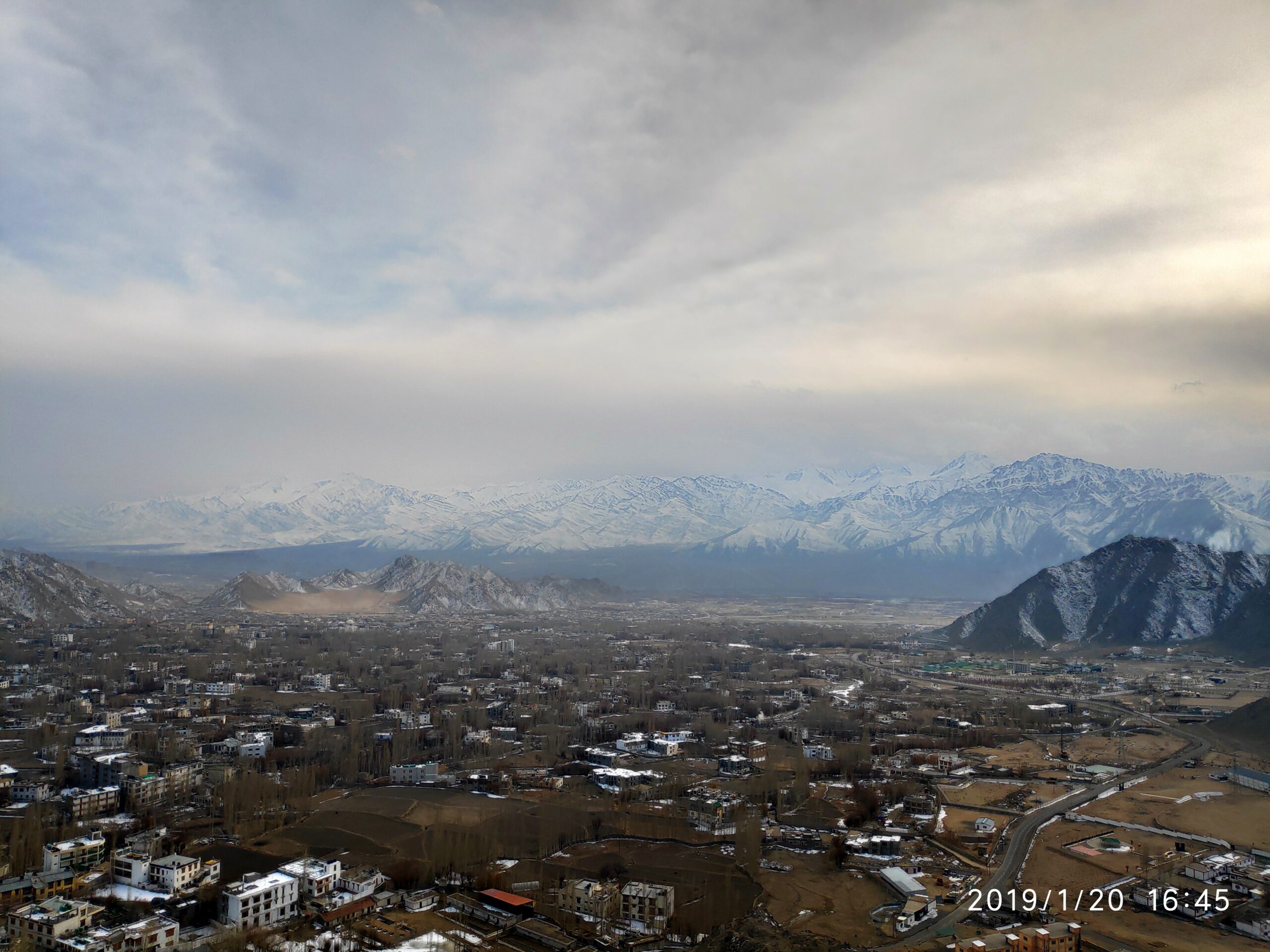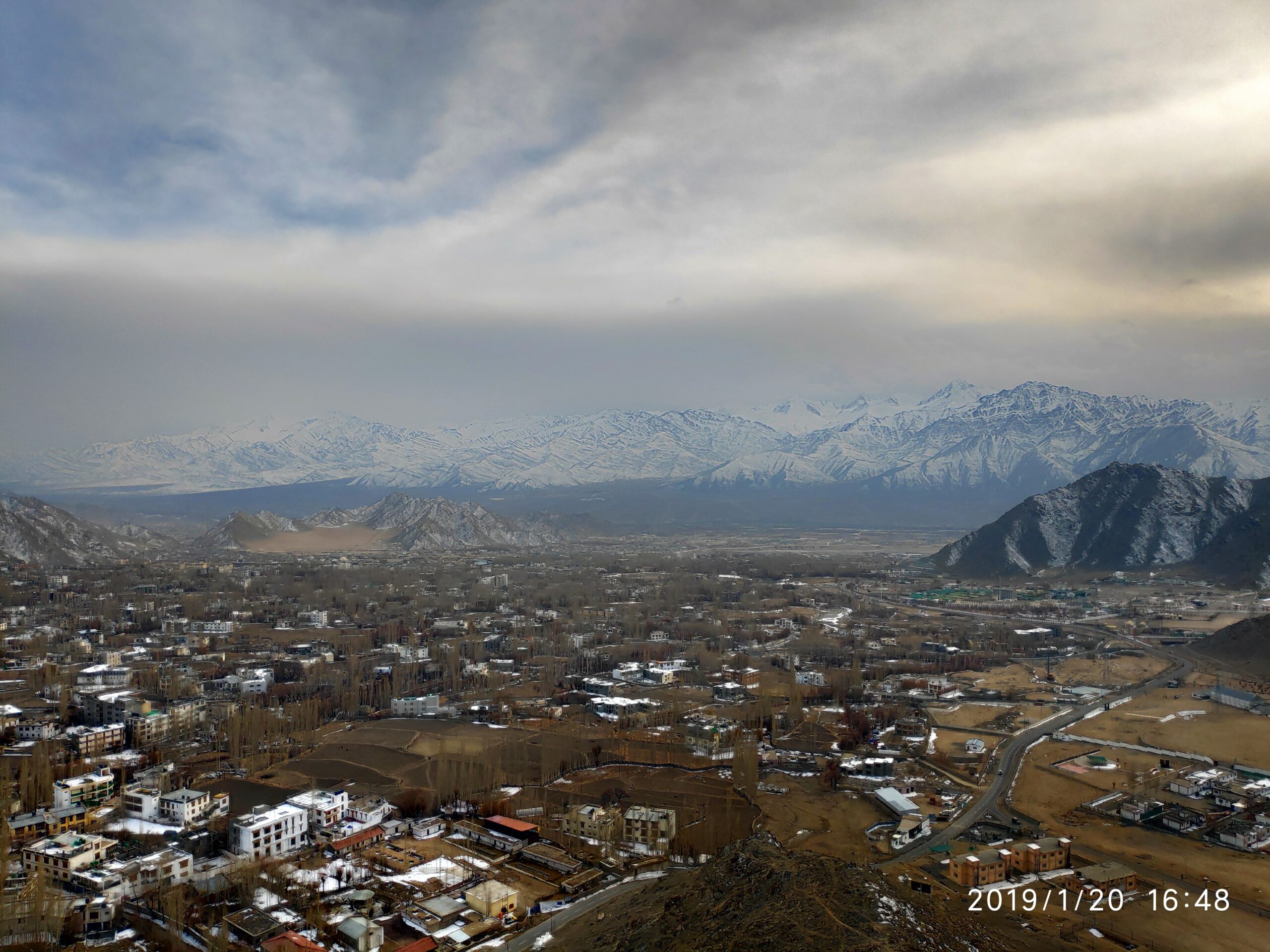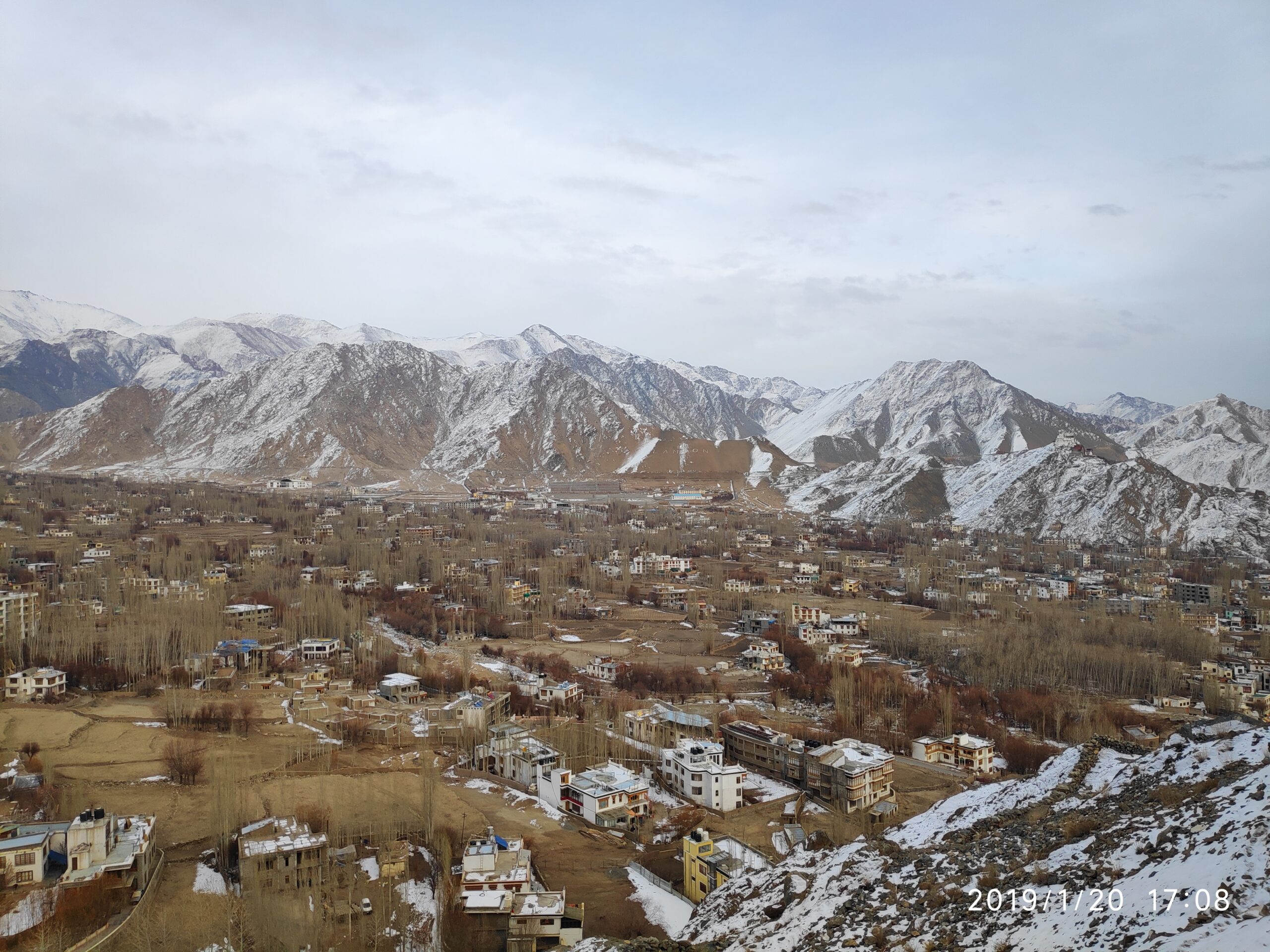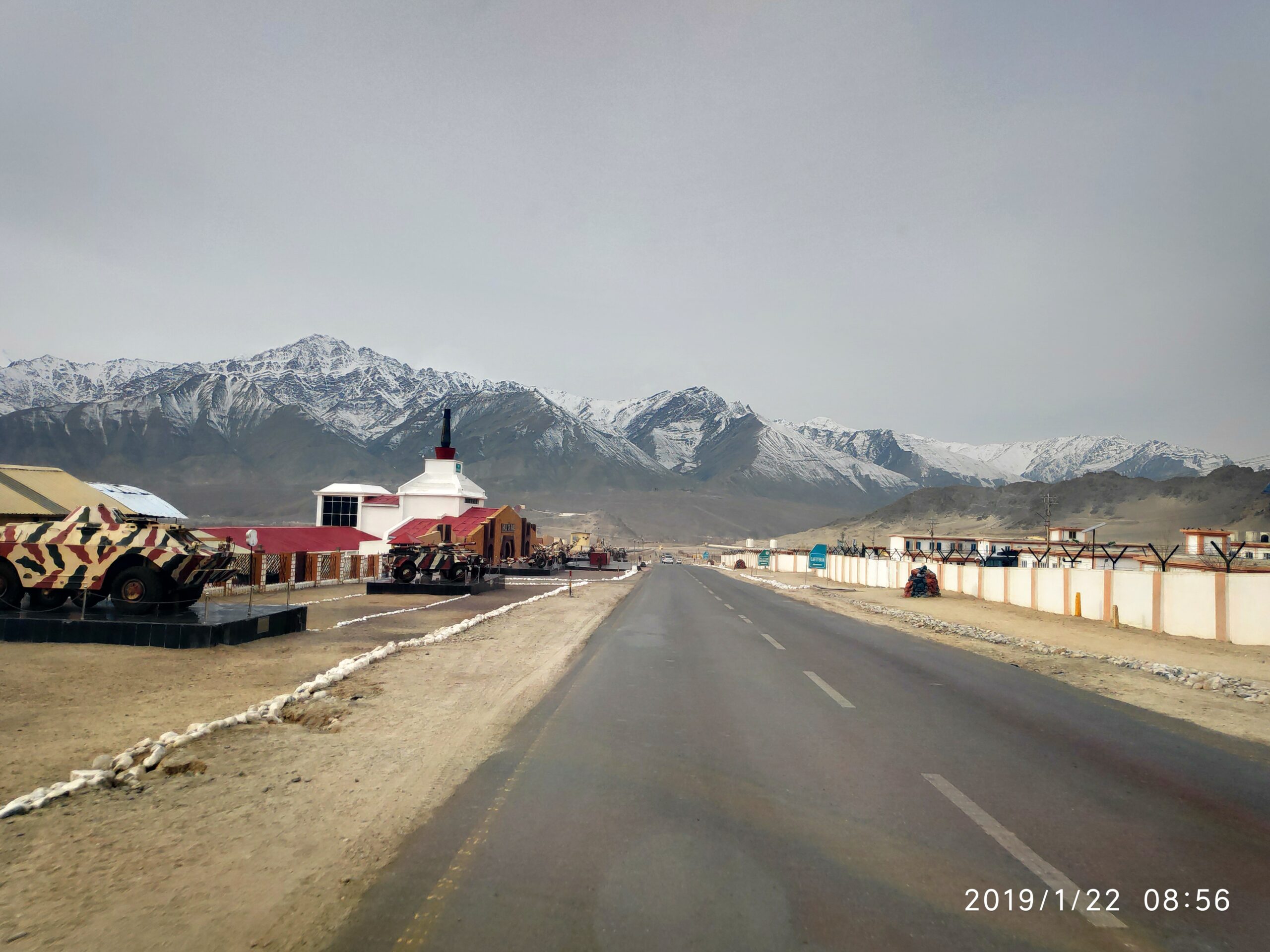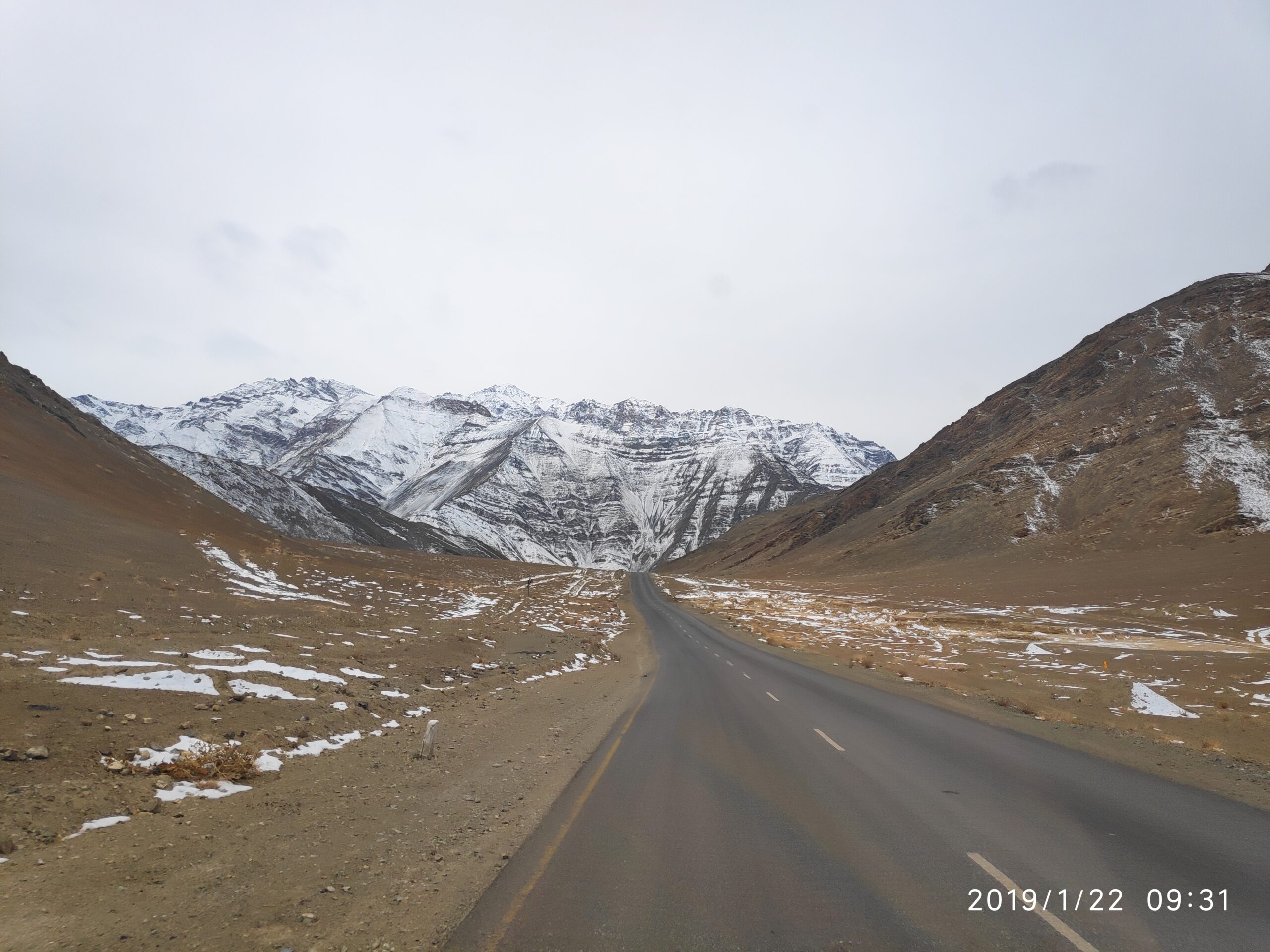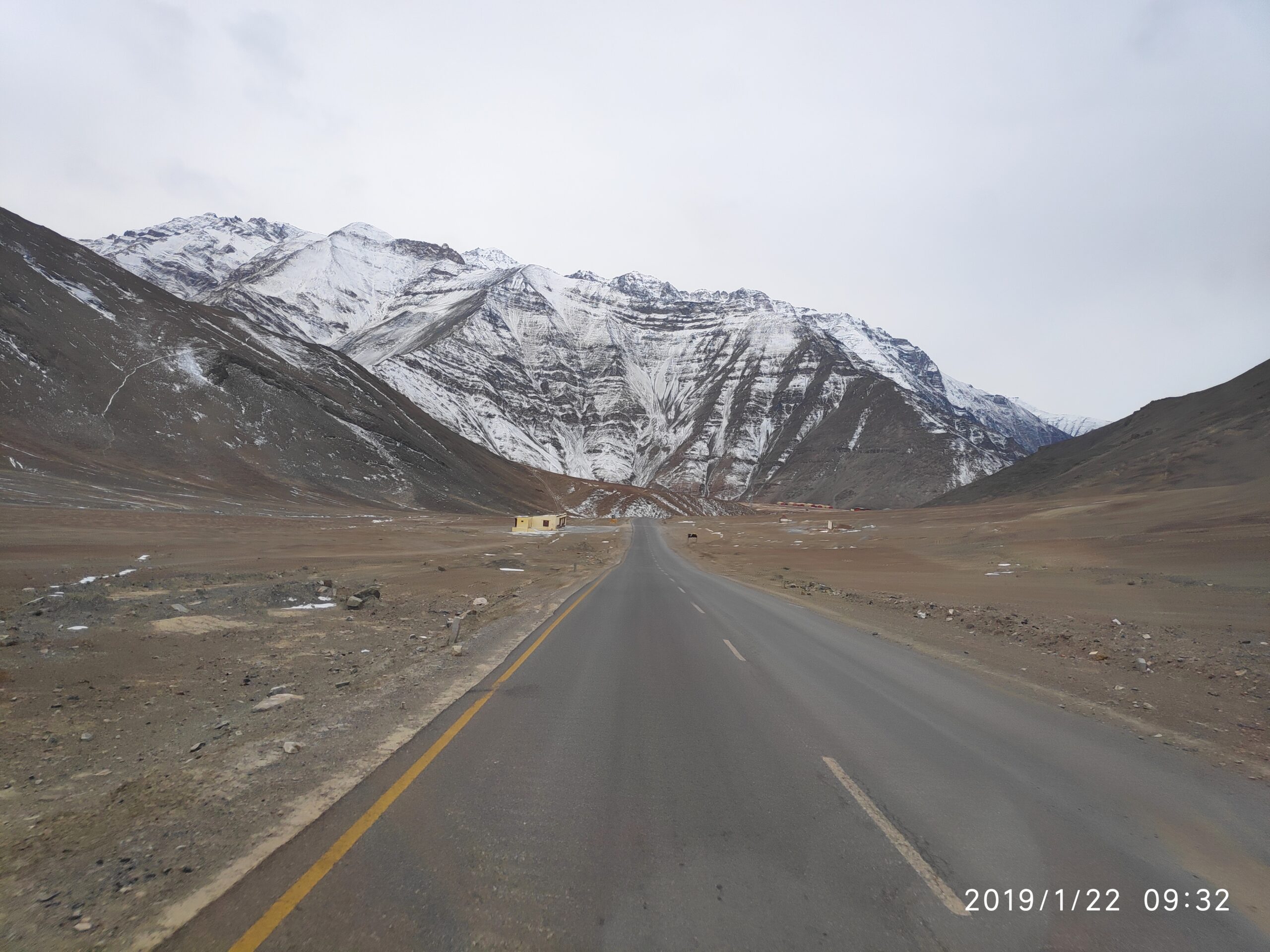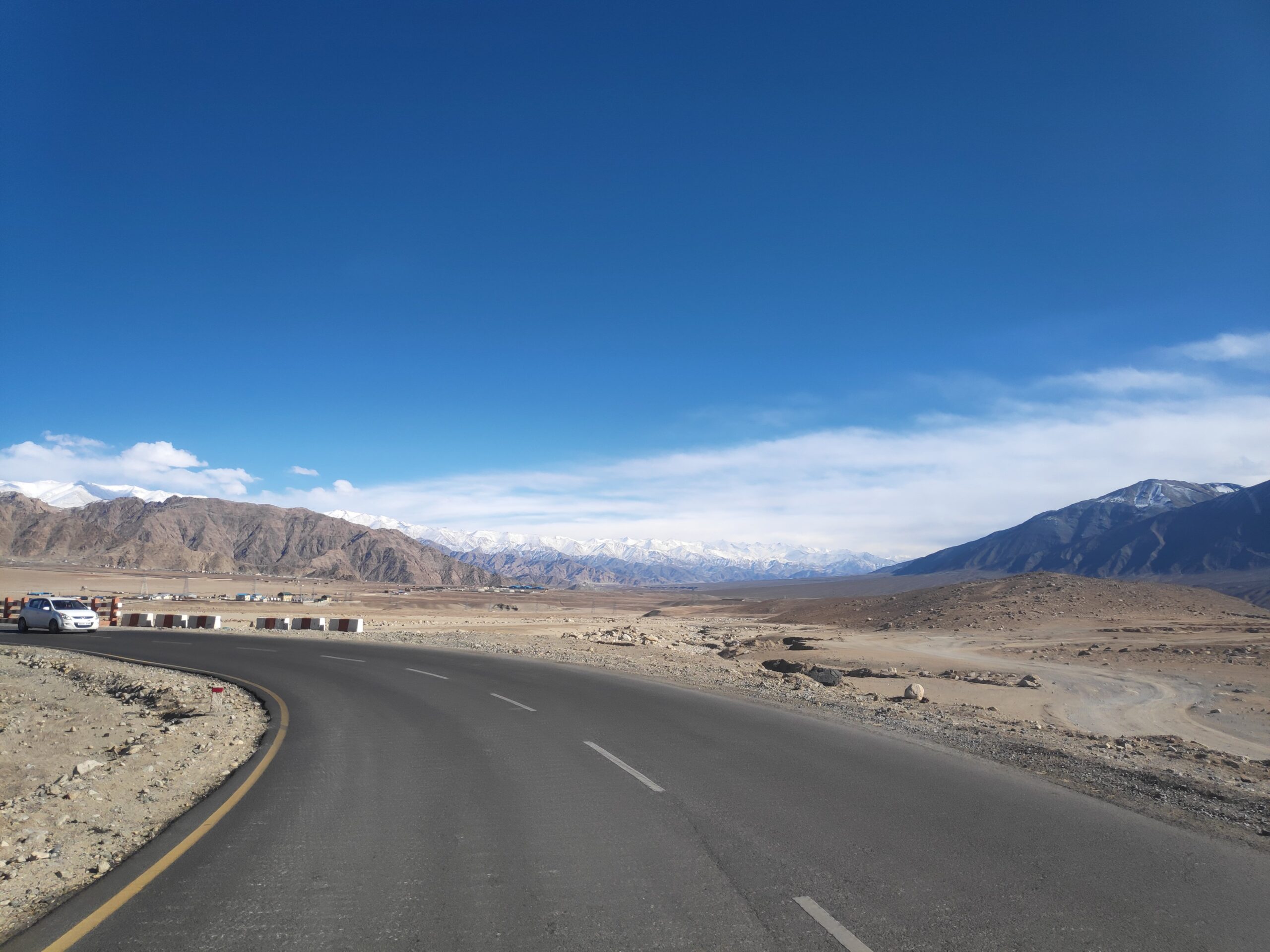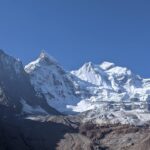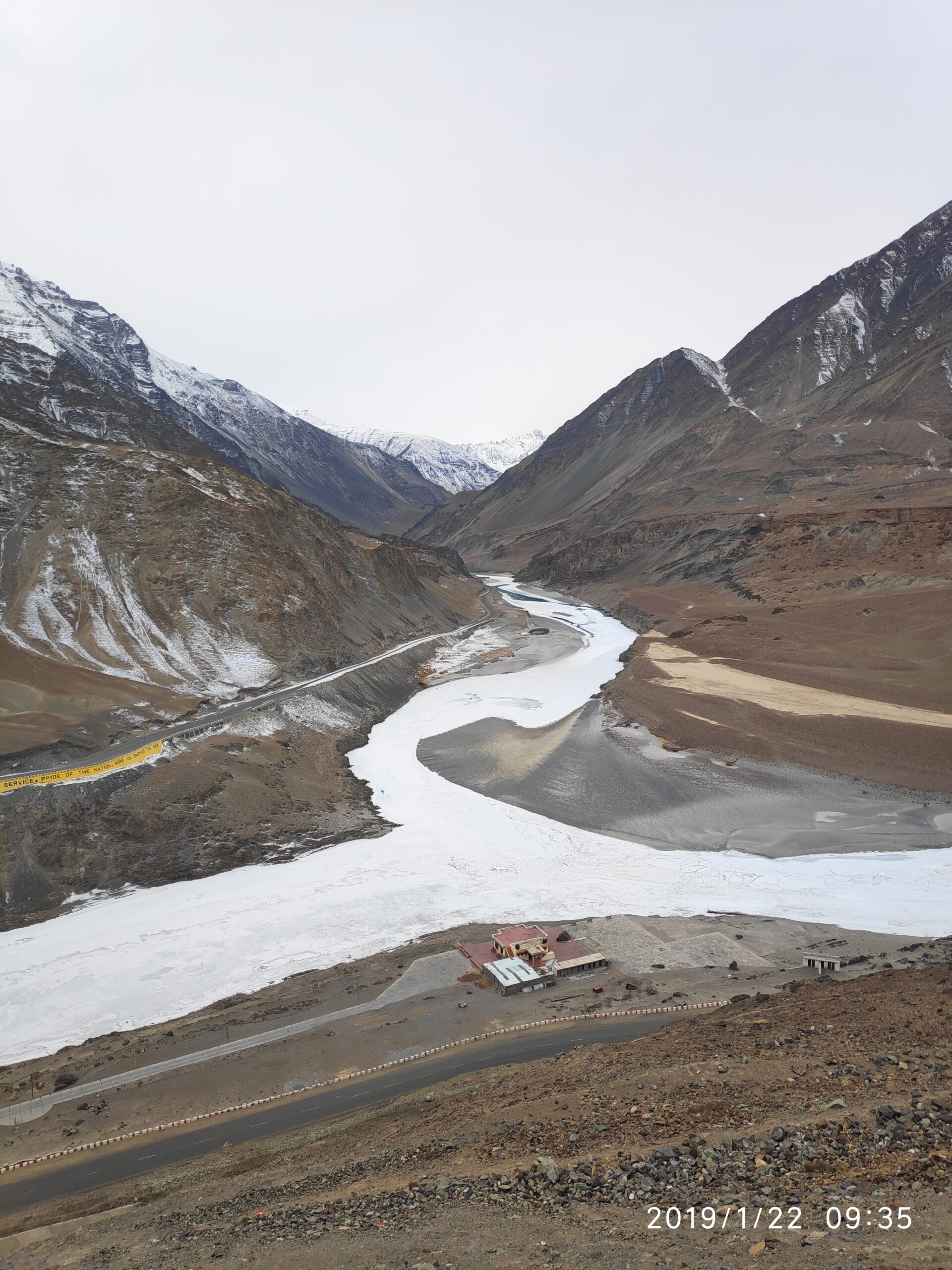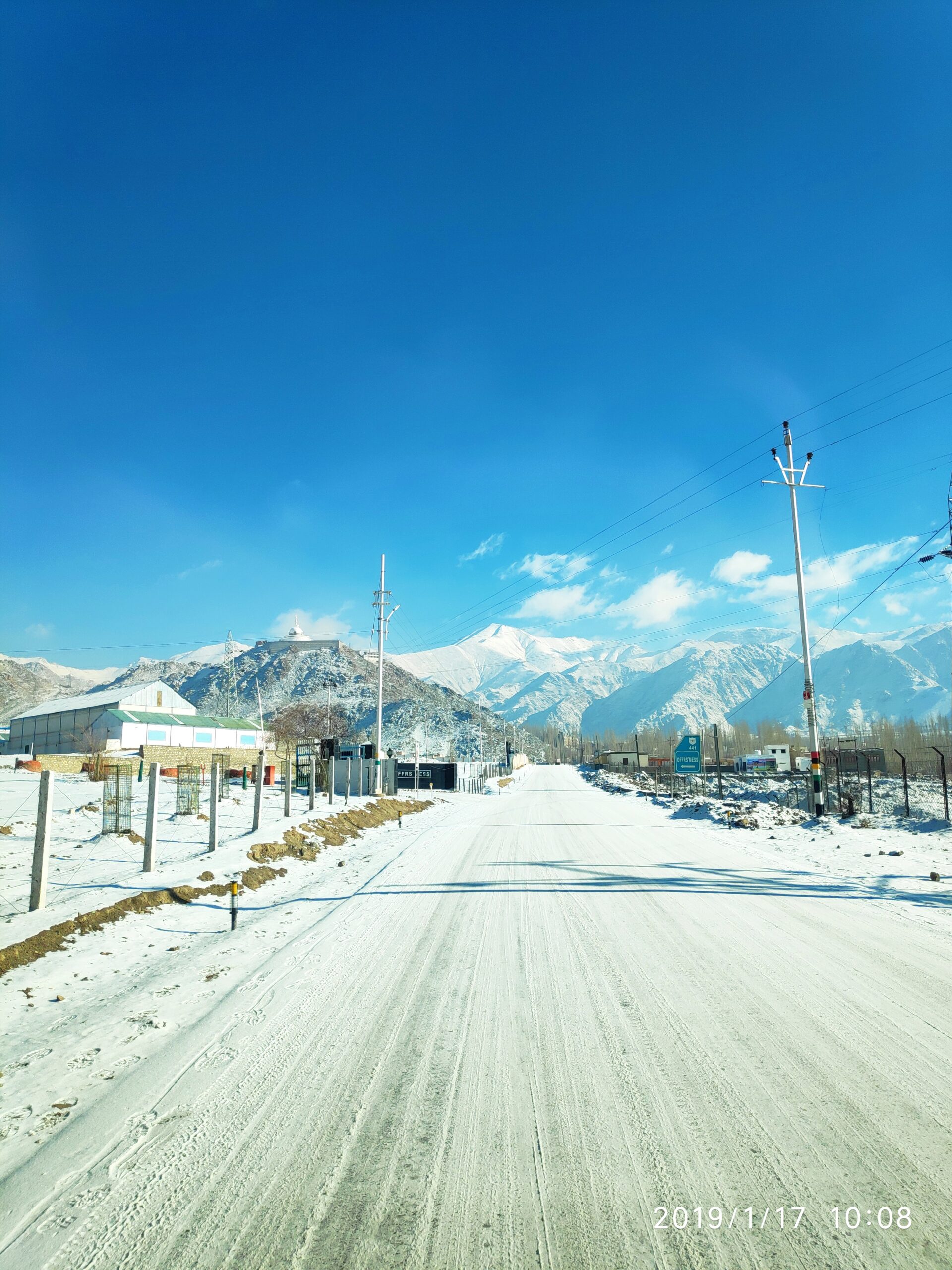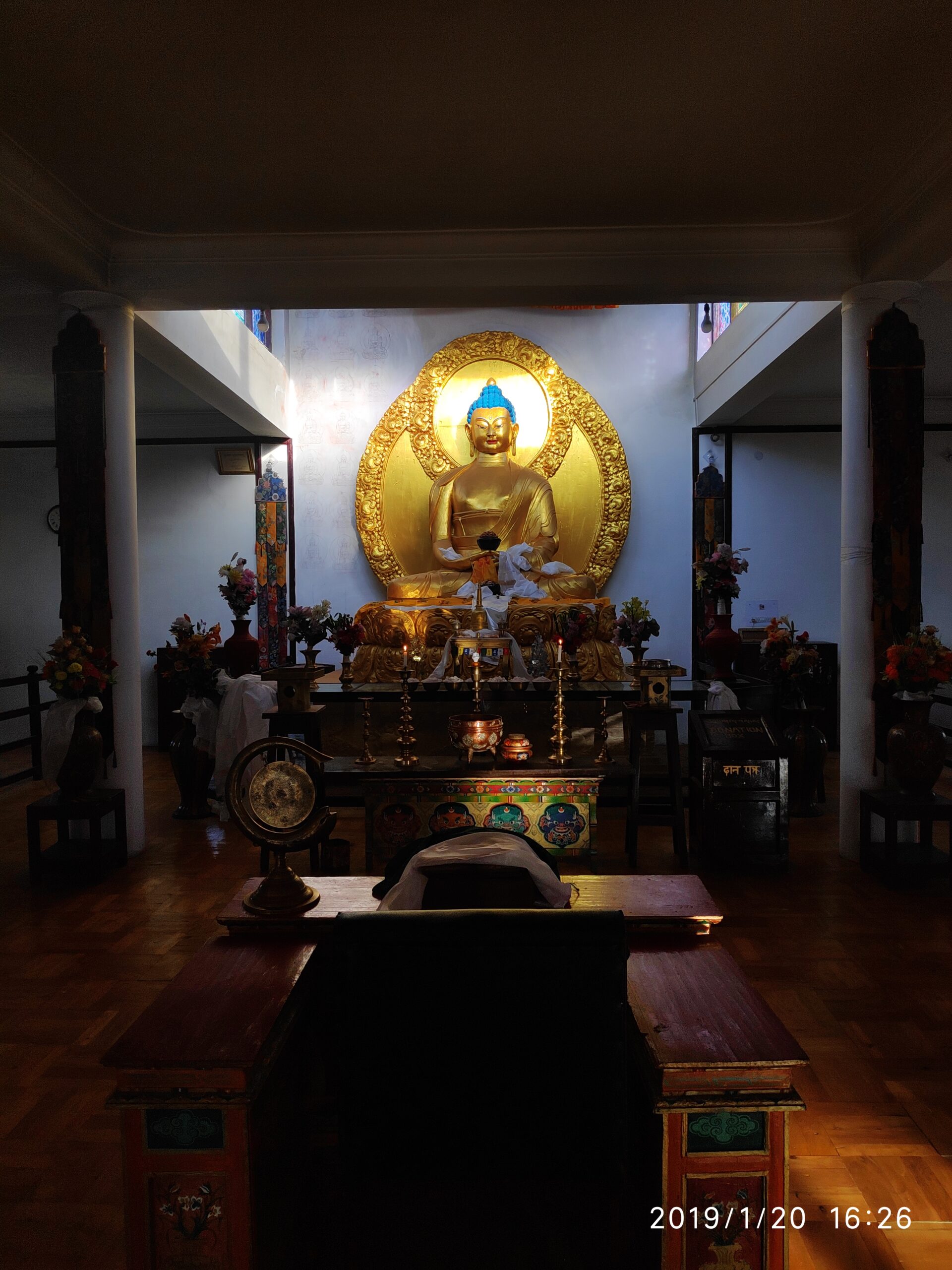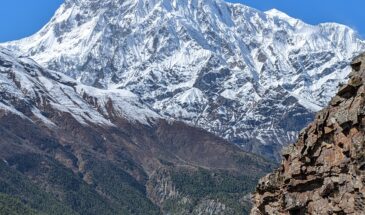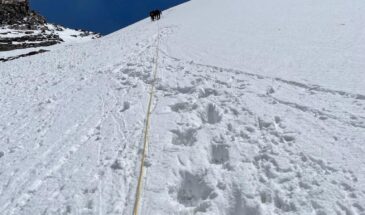- Trek Overview
- Itinerary
- Inclusions / Exclusions
- Gallery
- FAQ
Experience phenomenal beauty and varied landscapes as you explore the Sham Valley in the cold desert region of Ladakh. On this trek you will experience the ethnic warm culture of the inhabitants of Ladakh, visit monasteries, walk across the magnificent valley — with untamed sparkling streams, large barley fields, willow trees, surrounded by rocky mountains. It makes up for a spectacular sight when the greens of the fields contrast with the browns of the mountains, and the crystal blue skies reflect in the sparkling streams across the valley!
The Area
Ladakh is bordered by the Greater Himalayas in the west and south, the Karakoram in the north and the Tibetan Plateau in the east. These ranges form a natural barrier and does not allow clouds to enter this valley making it a rain shadow region and thus a cold desert.
The term Ladakh translates to land of high passes. Some of the highest motorable roads in the world are here. Ladakh is a major tourist destination in the summers.
Expected Weather
- Chances of Rain/Hail – Very low
- Snow on trail – Possible
- Temperatures – Afternoons: -2 to -3 degrees
Nights: -12 to -15 degrees
Day 1: Arrive in Leh
Pickup arranged from airport
Evening hike to Shanti Stupa for acclimatization
Overnight at hotel/homestay in Leh
Day 2: Acclimatization Day in Leh
This day can be utilised for sightseeing, weather-permitting, to visit monasteries or a walk around the local market. A vehicle can be arranged at an additional cost. Trek briefing in the evening.
Overnight at hotel/homestay in Leh
Day 3: Drive from Leh to Likir village
Distance: 55 kms; Time: 1-2 hours
Trek from Likir village (3650 mts) to Yangthang (3690 mts) via Phobe La (3580 mts) & Chagatse La (3630 mts)
Trek time: 4-5 hours
Overnight stay in homestay
Day 4: Trek from Yangthang (3690 mts) to Hemis Shukpachen (3633 mts) via Tsermangchen La (3755 mts)
Trek time: 2-3 hours
Overnight stay in homestay
Day 5: Trek from Hemis Shukpachen (3633 mts) to Tingmosgang village (3230 mts) via Mebtak La (3750 mts)
Trek time: 3-4 hours
Overnight stay in homestay
Day 6: Drive from Tingmosgang village (3230 mts) to Leh via Lamayuru
Distance: 165 kms; Time: 4-5 hours
Overnight at hotel/homestay in Leh
Day 7: Trek ends today
Check out after Breakfast
Drop arranged to airport.
Inclusions –
- Complete Stay, Food (except lunch in Leh) and accommodation (Twin sharing basis) for the entire trek
- Hotel stay in Leh
- Airport Pickup and Drop. (On trek specific dates only. Note you have to manage your travel yourself if you come early or leave later)
- Rentals for all common gear provided to you like tent, sleeping bags, crampons etc.
- Forest entry permission and camping charges
- Guide and expertise charges
Exclusions –
- 5% GST
- Meals or drinks purchased by participants during the travel or trek (example biscuits, fruits etc)
- Lunch in Leh
- Rentals for personal gear (Refer things to get section)
- Any extra government charges.
- IMF charges for Foreign Nationals
- Flight/Train/Bus ticket till Leh.
- Backpack offloading charges. You are expected to carry your own backpack. Trekkers unable to do so can opt for a porterage service at ₹400/day
- Trek insurance (optional)
One can fly to Leh. Note, our pick up vehicles will reach the airport Leh at 8.30 and 11.30. Request you to book your flight accordingly. Leh is well connected by road from both Srinagar and Manali in the summers. One can get buses and shared jeeps to Leh from both the locations. If you decide to take a private vehicle from Srinagar you can reach Leh in a day. From Manali it is advisable to halt at Jispa or Sarchu (for acclimatization) for the night.
Yes, but you are expected to reach the hotel on day 1 of the trek by dinner.
Yes, one can go to these places providing you are acclimatizing well. We can arrange a cab at an additional cost for all the participants that are interested.
It is not advisable to go to that altitude on your second day at Leh. You can visit it after the trek.

